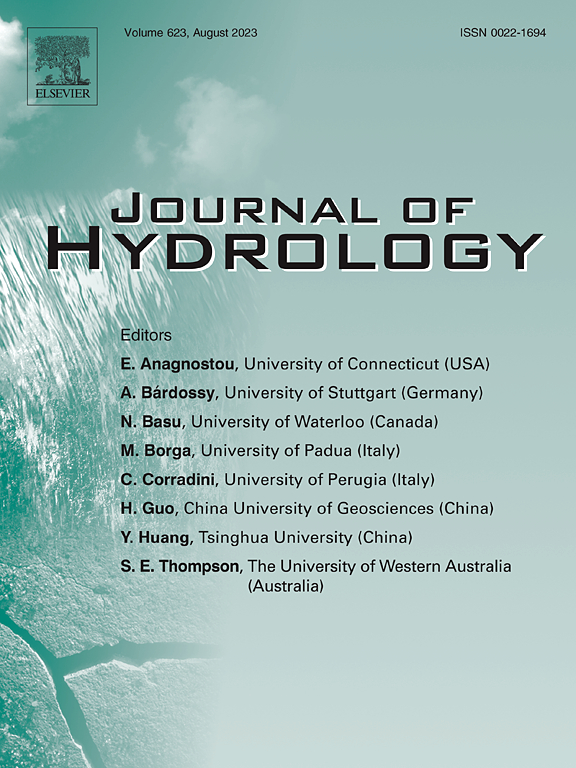Interactions between climate and land-use/cover changes exhibit spatiotemporal asymmetries that influence water yield
IF 5.9
1区 地球科学
Q1 ENGINEERING, CIVIL
引用次数: 0
Abstract
At spatiotemporal scales, the interactive effects (i.e., additive, antagonistic, or synergistic) of multiple global changes on ecosystem services are not constant but dynamic. To examine this dynamic yet underexplored interaction, we predicted the asymmetric interplay between climate and land-use/cover (LULC) changes on water yield of ecosystems across China from 2021 to 2100 using multiple global climate models (GCMs). Combined LULC and climate impacts on water yield shift from the northeast and central areas (in 2021–2040) to western and southern regions in China (in 2061–2100). Rainfall changes dominate the patterns of interactions between rainfall and LULC changes in influencing the future water yield, while the transformation process of LULC strengthens or weakens these patterns. Specifically, during urbanization, the interactions are positive only under very low rainfall. In contrast, during transitions to grassland, forest, cropland, or barren land, the interactions are more pronounced under moderate rainfall but diminish as rainfall increases. An understanding of the dynamic impacts of global changes on water yield across landscapes and temporal scales is essential for effective natural resource management.
气候与土地利用/覆盖变化之间的相互作用表现出时空不对称性,从而影响水量
在时空尺度上,多种全球变化对生态系统服务的交互作用(即加性、拮抗或协同)不是恒定的,而是动态的。为了研究这种动态但尚未被充分探索的相互作用,我们使用多个全球气候模型(GCMs)预测了2021 - 2100年气候和土地利用/覆盖(LULC)变化对中国生态系统水量的不对称相互作用。2061-2100年中国东北和中部地区(2021-2040年)向西部和南部地区(2061-2100年)产水量转移的综合LULC和气候影响降雨变化主导着降雨与土地利用碳量变化相互作用对未来水量的影响模式,而土地利用碳量的转化过程则强化或削弱了这些模式。具体而言,在城市化过程中,只有在降雨量非常低的情况下,相互作用才为正。相比之下,在向草地、森林、农田或荒地过渡的过程中,这种相互作用在中等降雨量下更为明显,但随着降雨量的增加而减弱。了解全球变化在景观和时间尺度上对水量的动态影响对有效的自然资源管理至关重要。
本文章由计算机程序翻译,如有差异,请以英文原文为准。
求助全文
约1分钟内获得全文
求助全文
来源期刊

Journal of Hydrology
地学-地球科学综合
CiteScore
11.00
自引率
12.50%
发文量
1309
审稿时长
7.5 months
期刊介绍:
The Journal of Hydrology publishes original research papers and comprehensive reviews in all the subfields of the hydrological sciences including water based management and policy issues that impact on economics and society. These comprise, but are not limited to the physical, chemical, biogeochemical, stochastic and systems aspects of surface and groundwater hydrology, hydrometeorology and hydrogeology. Relevant topics incorporating the insights and methodologies of disciplines such as climatology, water resource systems, hydraulics, agrohydrology, geomorphology, soil science, instrumentation and remote sensing, civil and environmental engineering are included. Social science perspectives on hydrological problems such as resource and ecological economics, environmental sociology, psychology and behavioural science, management and policy analysis are also invited. Multi-and interdisciplinary analyses of hydrological problems are within scope. The science published in the Journal of Hydrology is relevant to catchment scales rather than exclusively to a local scale or site.
 求助内容:
求助内容: 应助结果提醒方式:
应助结果提醒方式:


